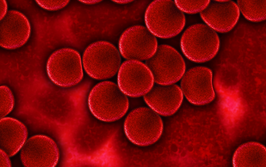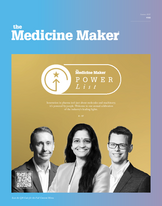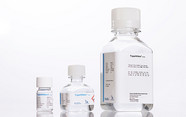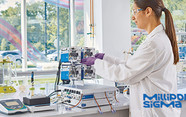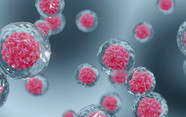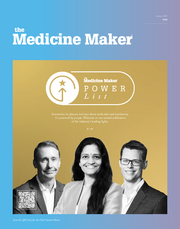Kite, CAR Ts, and Access for Patients
Depending on the country, only about two in 10 eligible patients, on average, receive CAR T-cell therapy. We sat down with Kite’s Cindy Perettie to talk about access to CAR Ts.
Stephanie Vine | | 9 min read | Interview

“Depending on the country, only about two in 10 eligible patients, on average, receive CAR T-cell therapy. These are potentially curative therapies, so a major area for us is realizing the full potential of CAR T and ensuring more patients have access. This means meeting patients where they are. For instance, how do we treat someone in their town rather than have them travel all the way to a treatment center in a far-away city?”
Cindy Perettie, Executive Vice President and Global Head of Kite, a Gilead Company, tells us about her career, and what cell therapy manufacturers can do to help more patients benefit from potentially curative CAR T cell therapies.
What first inspired your interest in science?
I attribute it to my high school biology and chemistry teachers. They did such a great job teaching science. It made me realize how complex cells are, and how they communicate with the rest of the body through chemistry using nerves and other systems. I absolutely loved it. When you start thinking about it in the context of disease – and we’ve all had family or friends impacted by illness – it becomes even more fascinating. You just want to get in there and make a difference in the world.
Why did you join the pharma industry?
I did basic research in academia at Johns Hopkins for several years, and while I loved it, I realized something important: basic research is foundational and is where everything starts, but if you really want to see its impact on patients, then you need to take it further.
I watched others move into the pharma industry, and I saw how they were able to translate that foundational research into something tangible for patients. That’s when it clicked for me. I wanted to have that broader impact too.
You’ve worked in several companies over the years. What are the most memorable milestones or rewarding moments?
One of the earliest milestones in my career was when I was doing basic research on VEGF (Vascular endothelial growth factor); at the time, I was focused on it from a research perspective, but about five or six years later, I joined a pharma company and had the opportunity to develop anti-VEGF approaches into an actual therapy. Seeing it go from a scientific concept to something that was helping patients was incredible. That therapy ended up being approved in 19 different indications. It was amazing to witness that journey from research to real-world impact.
I’ve also been able to work on potentially curative therapies at Genentech and now at Kite. It’s incredibly fulfilling to be part of something that can profoundly change cancer treatment, especially for patients who might not have had options before. When you get the chance to work on something that truly changes lives, it’s a privilege and a career highlight.
How did you join Kite?
I hadn’t worked directly with cell therapy before, but I had worked with therapies in the blood cancer space. Before joining Kite, I reached out to some physicians to get their perspectives on cell therapy and the different companies in the space – without mentioning Kite specifically. What really stood out to me was that all of them, independently, said the same thing: “If you’re going to go into cell therapy, you need to join Kite.” They told me that Kite is the global leader in cell therapy and praised their reliable manufacturing capabilities.
When I finally spoke with Gilead and Kite leadership, it became clear that it was the right place for me. Why you join a company comes down to three things: the people, the culture, and the science. Without question, Kite had all three.
How was the learning curve of jumping into a new field?
Because I’d been following cell therapy from a distance, I thought I understood it. After I started at Kite, however, I realized how complex cell therapy really is – everything from the treatment paradigm to the manufacturing process.
One thing that really stood out to me was the way people at Kite work together. The company refers to their work as a “team sport.” Every company says they value teamwork, but at Kite I truly understand what this means. Without a collaborative mentality, we wouldn’t be able to get these therapies to patients. The learning curve has been incredible. I’m 20 months in, and I’m still learning every single day.
What is Kite working on at the moment?
Depending on the country, only about two in 10 eligible patients, on average, receive CAR T-cell therapy. These are potentially curative therapies, so a major focus area for us is realizing the full potential of CAR T and ensuring more patients have access. This means meeting patients where they are. For instance, how do we treat someone in their town, rather than have them travel all the way to a treatment center in a far-away city?
Beyond that, Kite has an incredible pipeline. We have approved therapies for lymphoma and leukemia, and we recently completed studies for an investigational multiple myeloma therapy. We’re also expanding into solid tumors. We are looking at glioblastoma and neuroblastoma, and we have research underway in hepatocellular cancers. At the end of last year, we filed an IND for our first program in autoimmune disease. We are also working on several therapies that are next generation, including dual targets and armoring – and we are seeing improvements in both efficacy and safety.
At the same time, we continue to improve our manufacturing process. We’re in nearly 30 countries already and we’re working hard to reduce turnaround times for patients. In the early days of cell therapy, it would take several weeks to get therapies to patients. In the US, we’ve brought that down to just 14 days. Outside the US, we’re at 17 days. This is a massive improvement, and it’s all thanks to automation, advancements in manufacturing processes, and enhancements in quality testing. This is very important as the patients have aggressive disease and need the therapies as soon as possible. During the COVID-19 pandemic, the industry learned a lot about rapid sterility testing, which continues to help us shorten timelines.
Why are CAR Ts so compelling for autoimmune diseases?
Think about conditions such as lupus or multiple sclerosis. We’ve already seen the same targets used in cancer – particularly with monoclonal antibodies – being applied to these diseases. So why not do the same with CAR Ts?
Professor Georg Schett in Germany has already taken that step, and the results are promising. For patients living with a chronic disease that requires life-long treatment, a CAR T treatment – even if it’s not fully curative in the first version – could still offer a lasting impact. It might take a few iterations to get to that point, but even being treatment-free for five or six years would be life-changing. If we can develop a treatment that makes those diseases no longer feel chronic, that would be incredible.
International Women’s Day took place recently. What are your thoughts on why diversity is so important in pharma?
I’m the executive sponsor for our Women at Gilead forum, and I see firsthand – both at Kite and Gilead – how important it is to have women in impactful leadership roles. It’s something that matters deeply to us as a company. If you want the best ideas at the table and real innovation, then you need diversity in the workforce.
We’ve taken this commitment a step further by actively partnering with initiatives such as Women in Lymphoma. This effort isn’t just about raising patient awareness; it’s also about supporting female physician leaders in advancing their careers.
In addition, we recently launched Women in CAR T, kicking it off at the Tandem conference – and we plan to take the conversation to the American Society of Hematology annual meeting and exposition later in 2025. The goal is to connect female CAR T treaters from around the world; bringing together women who are just out of medical school with those leading major departments. It’s about sharing experiences, building mentorship and sponsorship opportunities, and creating a network that supports career growth. This is something we’re truly passionate about. In the CAR T treatment space, we believe there’s room for more female treaters. We want to see more women in leadership roles within this field.
I think another important piece to consider is female patients. Patient advocacy groups like the Leukemia & Lymphoma Society and others are doing a lot of work around this issue. We need to understand the unique needs of female patients and make sure we’re designing programs that truly support them.
What are the most pressing challenges in the industry and where do you think the priorities need to lie in the next one to two years?
Receiving a CAR T – and knowing that more than 50 percent of patients who had a complete response are still alive at five years and in remission – is life-changing. But right now, it pains me to think about how most patients cannot access these therapies. We need education and awareness around CAR Ts. Right now, there are patients out there who will never hear about CAR T from their doctor. In many cases, CAR T is not even presented as an option. This has to change.
And for those who can receive a CAR T, we need to make sure the burden isn’t on the patient. The healthcare system should be set up so that treatment is accessible and so that patients don’t have to travel far. This means moving into more regional or community settings. The industry needs to be asking, are we listening and understanding patient needs, and serving them in a way that is best for them? To this end, there are a lot of innovations happening in manufacturing, such as truly rapid manufacturing and manufacturing in a box that could be placed near all major hospitals and airports.
At Kite, we’re looking at everything, including expanding authorized treatment centers, improving education efforts, and driving innovation that makes cell therapy more accessible. Over the next two years, our focus is clear: getting these transformative therapies to more patients. And that means looking at every part of the ecosystem. My hope is that in two years, when we speak again, we’ll be talking about four or five out of 10 patients receiving CAR T therapy – not just two.

Making great scientific magazines isn’t just about delivering knowledge and high quality content; it’s also about packaging these in the right words to ensure that someone is truly inspired by a topic. My passion is ensuring that our authors’ expertise is presented as a seamless and enjoyable reading experience, whether in print, in digital or on social media. I’ve spent fourteen years writing and editing features for scientific and manufacturing publications, and in making this content engaging and accessible without sacrificing its scientific integrity. There is nothing better than a magazine with great content that feels great to read.




